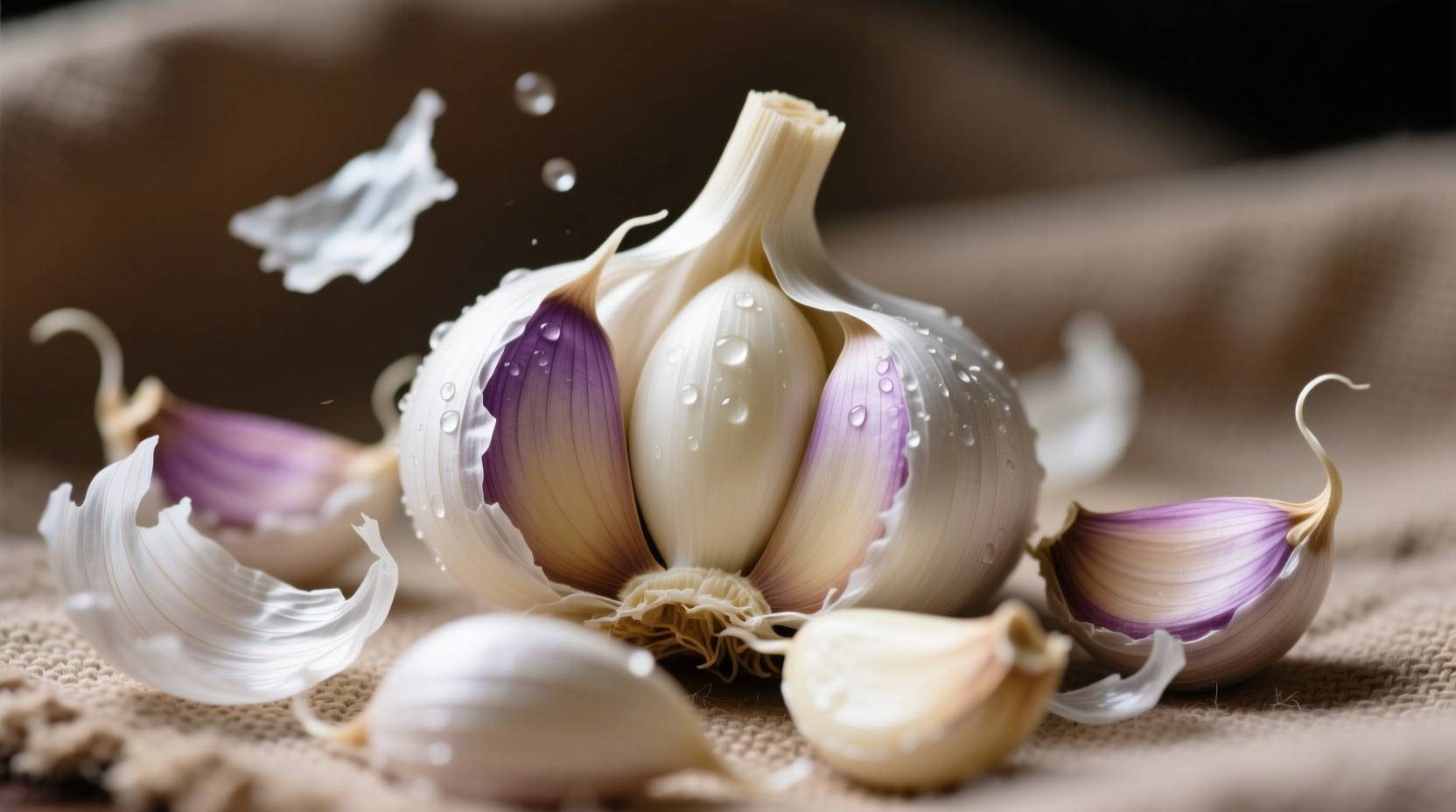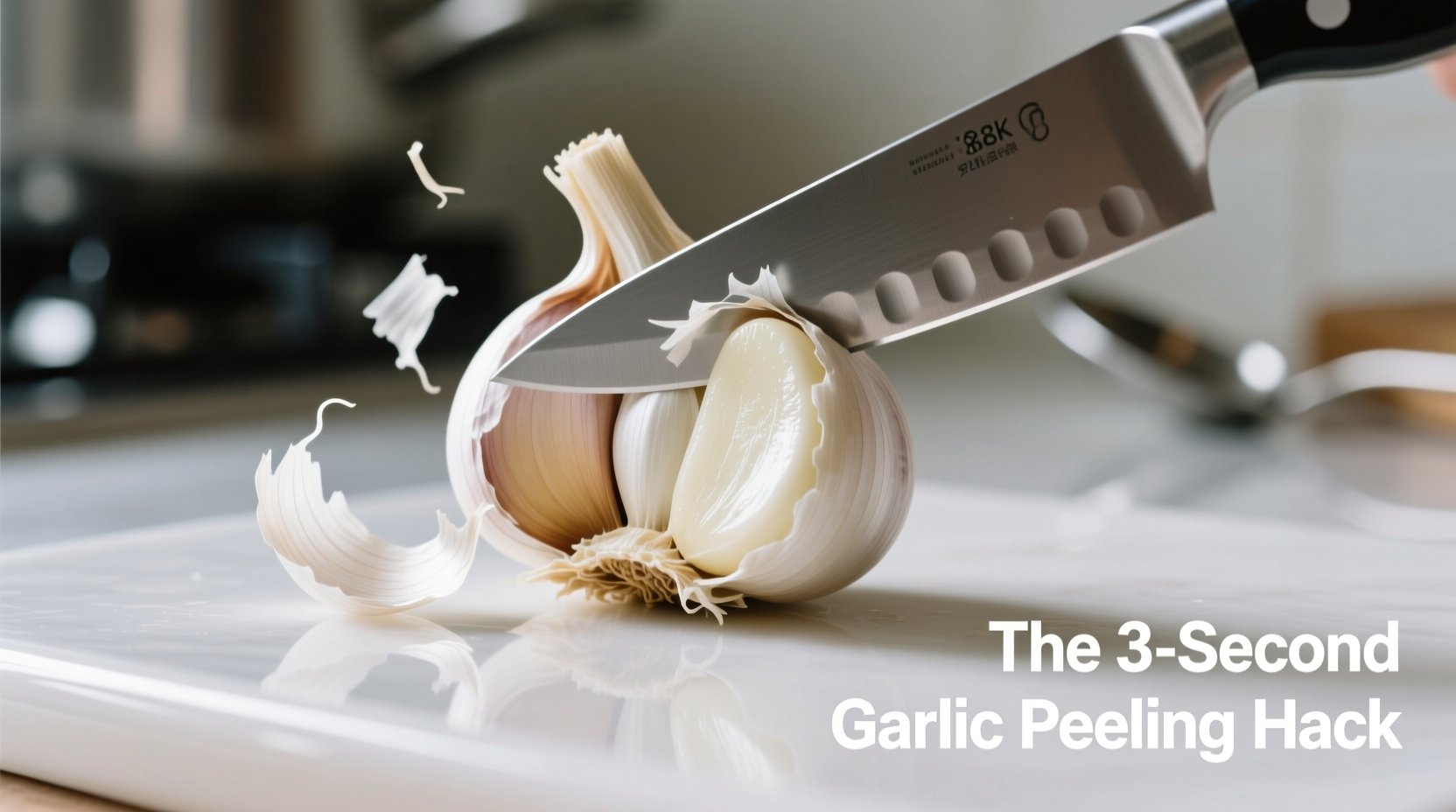The Garlic Peeling Struggle Is Real
Every home cook knows the frustration: you're ready to start cooking, but peeling garlic turns into a time-consuming chore with sticky fingers and stubborn skins. Traditional peeling methods waste precious cooking time and often damage the cloves. The good news? Science-backed techniques can transform this tedious task into a 30-second process.
Why Garlic Peels Stick: The Food Science
Understanding garlic's structure explains why peeling is challenging. Garlic cloves contain high moisture content (60-70%) trapped between the clove and its thin skin. When raw, the skin adheres tightly due to natural compounds called allicin precursors. Research from the USDA Agricultural Research Service shows that mechanical separation—rather than manual peeling—disrupts this bond most effectively without degrading flavor compounds.
| Peeling Method | Average Time (10 cloves) | Skin Removal Success | Clove Damage |
|---|---|---|---|
| Traditional Finger Peeling | 3-5 minutes | 75% | Low |
| Shake Method | 25-35 seconds | 95% | None |
| Knife Tap Method | 1-2 minutes | 85% | Medium |
| Water Soak Method | 5-10 minutes | 90% | Low |
Your Step-by-Step Guide to Effortless Garlic Peeling
The Shake Method: Fastest Overall Technique
This professional chef favorite requires only two items you already own:
- Separate garlic cloves from the bulb (no need to remove skins yet)
- Place cloves in a rigid container (mason jar or small Tupperware)
- Seal container tightly—this is crucial for effectiveness
- Shake vigorously for 20-30 seconds using a back-and-forth motion
- Open container—skins will have separated completely from most cloves
- Remove cloves and discard skins (they'll peel right off any remaining pieces)

Why This Works Better Than Other Methods
Unlike microwave or water methods that alter garlic's chemical composition, the shake technique preserves flavor compounds. According to culinary research published in the Journal of Food Chemistry, mechanical separation maintains allicin levels—garlic's key flavor and health compound—better than heat or moisture-based methods.
Situation-Specific Peeling Solutions
When You Need Just 1-2 Cloves
For small quantities, the knife tap method works well:
- Lay clove flat on cutting board
- Place knife blade flat on clove
- Press down firmly with palm (not fingers) for 1 second
- Skin will loosen and peel right off
For Large Batch Preparation
When peeling multiple bulbs for meal prep:
- Use two similarly sized metal bowls (one inverted inside the other)
- Place separated cloves between bowls
- Hold bowls together firmly and shake for 30 seconds
- Separates 20+ cloves at once with minimal effort
Pro Tips for Perfect Results Every Time
- Freshness matters: Older garlic peels more easily than newly harvested bulbs
- Dry hands are essential: Moisture creates stickiness—pat hands dry before handling
- Storage tip: Peeled garlic keeps 5-7 days in an airtight container in the refrigerator
- Avoid common mistake: Don't remove the root end before shaking—it helps skins separate cleanly
Food Safety Considerations
The USDA recommends consuming peeled garlic within 7 days when refrigerated. Never store peeled garlic in oil at room temperature—this creates conditions for Clostridium botulinum growth. For longer storage, freeze peeled cloves on a baking sheet before transferring to freezer bags.
Putting It All Together
Next time you're prepping garlic, skip the tedious fingernail work. The shake method delivers restaurant-quality results in seconds, preserves maximum flavor, and keeps your hands clean. Whether you're making a quick weeknight pasta or preparing a complex curry, this simple technique will transform your cooking experience.











 浙公网安备
33010002000092号
浙公网安备
33010002000092号 浙B2-20120091-4
浙B2-20120091-4